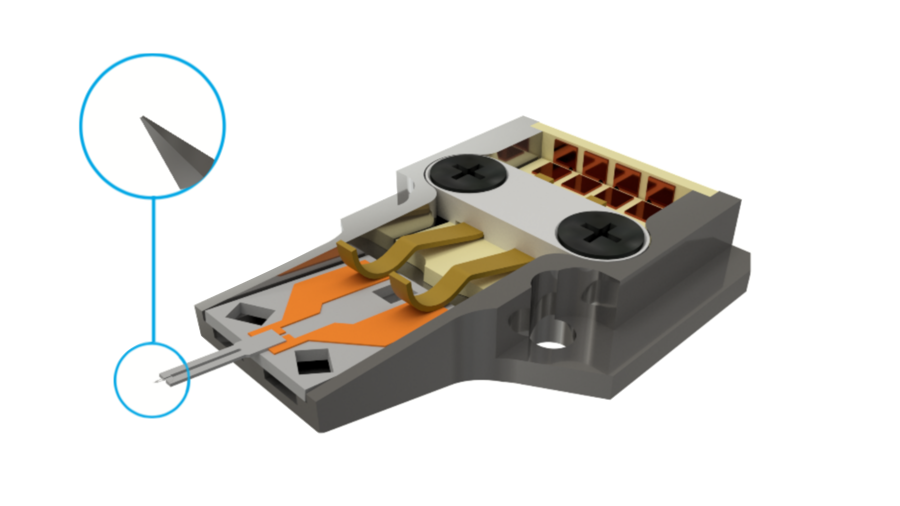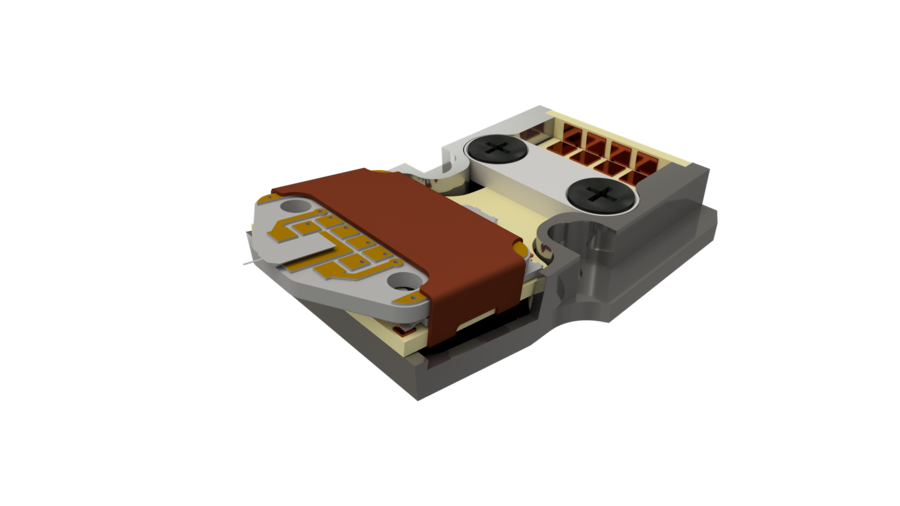Self-sensing probes for LiteScope
In LiteScope AFM-in-SEM can be used various self-sensing probes for measuring with different AFM techniques. The available probes extend the possibilities of multimodal imaging to a wide range of measurement techniques that assure in-situ analysis of various sample properties.

Akiyama
The go-to probe for CPEM measurements thanks to its visible tip. Capable of measuring AFM topography and energy dissipation signal at the same time.
Measurement modes: Topography, Energy dissipation

NenoProbe Magnetic
Magnetic-sensitive probe based on the Akiyama sensor, that can be used in SEM thanks to its visible tip. It uses the same probe holder as regular Akiyama.
Measurement modes: Topography, MFM

NenoProbe Conductive
Our self-produced AFM probe with a conductive tip, capable of performing C-AFM, KPFM, PFM and I-V spectroscopy.
Measurement modes: C-AFM, KPFM, PFM, I-V spectroscopy

Piezo-resistive probes
AFM probe suitable for both dynamic and contact mode topography measurements and F-Z spectroscopy.
Measurement modes: Topography, F-z spectroscopy

Are you interested? Feel free to...

ZrO2 Nanoparticles in Fe20Cr Oxide Dispersion-Strengthened Alloys Processed by Laser Powder Bed Fusion
The study investigates oxide nanoparticles (ONPs), specifically ZrO2 nanoparticles in Fe20Cr alloys, produced via laser powder bed fusion (PBF-LB/M), in order to understand how these nanoparticles impact the microstructure and mechanical properties. LiteScope was used for validating Electron Channeling Contrast Imaging (ECCI) findings and to distinguish nanoparticles (ONPs) from pores or preparation artifacts.

AFM-in-SEM LiteScope on the Cover of a Key Study on Diamond-Coated Probes
Researchers have developed a low-temperature plasma process to coat self-sensing AFM probes with boron-doped nanocrystalline diamond, boosting durability and sensitivity. This breakthrough enables precise electrical mapping of micro- and nanostructures in air and vacuum, advancing semiconductor technology.

Impact of Electron Irradiation on WS2 Nanotube Devices
Uncover the hidden effects of electron beam exposure on WS2 nanotubes and learn why understanding substrate charging is crucial for accurate prototyping and reliable device performance in next-generation electronics.
